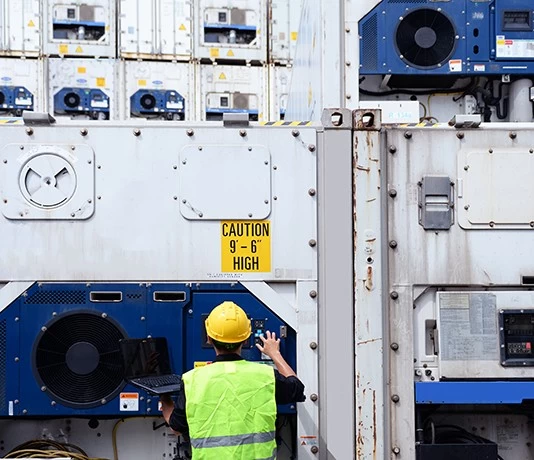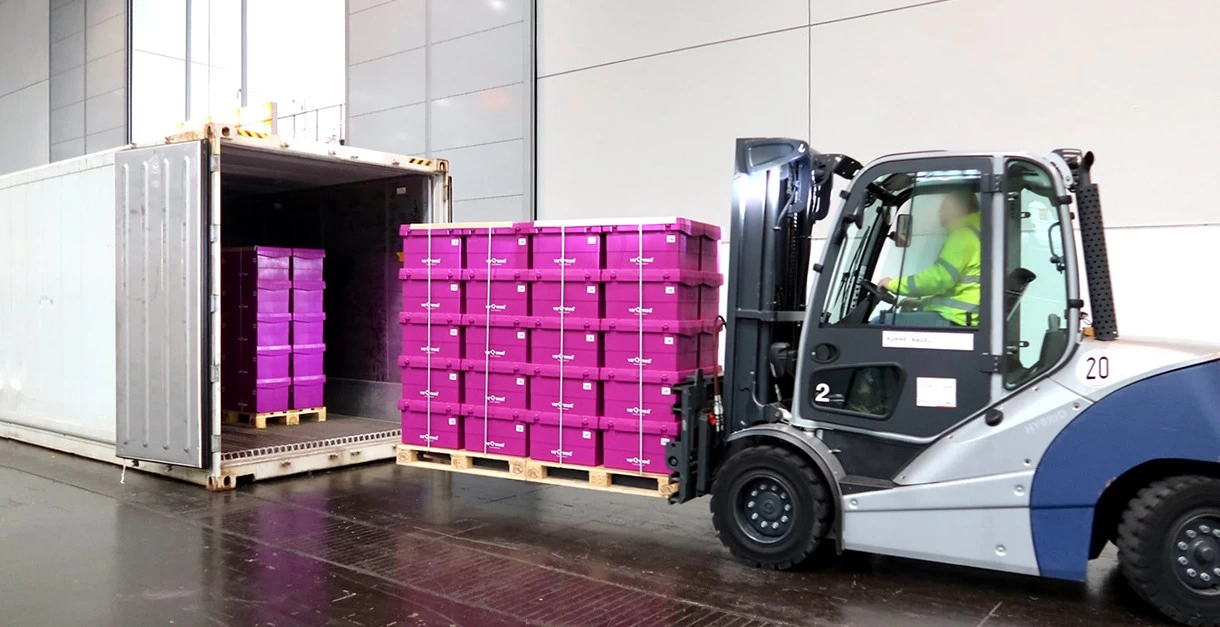Transporting temperature-sensitive goods over long distances requires precision and care. Our comprehensive guide outlines the best practices for handling and transporting various types of goods in refrigerated containers.
Maintaining the utmost freshness during transport is paramount, particularly for perishable goods. It's imperative to transport them under optimal conditions to ensure they arrive in pristine condition. Standard reefer containers are engineered to uphold temperatures between +25°C and -25°C for chilled and frozen cargo. Some reefer units in the global fleet are capable of maintaining temperatures as low as -35°C or even lower. Additionally, special "super freezer" containers have the ability to maintain temperatures as low as -70°C.
The cargo transported in refrigerated containers is typically categorized as chilled and frozen goods, with special considerations for specific cargo requirements.
 |
Your 5 point guide
By meticulously adhering to these crucial shipping guidelines, including proper packaging, temperature control, and timely delivery, you can ensure that your chilled and frozen foods consistently arrive ready for the market, preserving their quality and maximizing their shelf life.
|
Chilled commodities are goods that have to be transported at low temperatures above freezing point. Reefer containers can automatically control cooling with their supply air sensor. They are able to detect and change the temperature.
Fruits and vegetables continue to "live and breathe" after being harvested. They require oxygen and produce heat as they ripen. Additionally, they release gases like carbon dioxide through this respiration process, which needs to be taken into account during shipping because it affects the quality of the produce. Therefore, it is necessary to have proper ventilation to allow fresh air to flow uniformly through the cargo. This airflow should circulate through the packaging and over the produce to remove ripening heat, carbon dioxide, and ethylene, while refreshing the oxygen. The amount of airflow needed depends on the product's respiration rate and its tolerance to lower oxygen levels and higher carbon dioxide and ethylene levels. When stacking cartons of produce, it's important to align the holes to allow free circulation of air throughout the load, and any materials that might block the airflow should be removed. Ethylene gas, a natural by-product of perishables, can be utilized to control the ripening process.
Building a controlled atmosphere is the most technologically advanced way to precisely control the atmospheric composition of the container throughout its journey. A controlled atmosphere can keep the post-harvest perishables fresh for up to two to three times longer compared with other methods. Controlled atmosphere technology uses computer systems to monitor and control the atmospheric composition of the container.
Cold treatment is a procedure that destroys fruit flies, larvae or eggs. This is done by keeping the cargo at a low temperature for a determined time. It avoids the use of chemicals and is more environmentally friendly.
Frozen cargo generally refers to goods that need to be shipped and stored at -20° C or less. Some goods that have a high-fat content, such as ice cream, require a lower temperature. It is important to note that local regulations for the transport temperature of certain frozen goods may differ.
Frozen goods should be stacked in a block stowage manner with no gaps between the pallets or packages, and with the packaging free of any holes. This arrangement allows air to flow over the cargo, dissipating any heat that may have entered the refrigerated container. It's important to note that ventilation is not necessary for non-respiring goods such as candy, pharmaceuticals, or any frozen cargo.
Frozen cargo typically includes: frozen meat and seafood, frozen prepared foods, frozen fruit concentrates, frozen fruits and vegetables and ice cream.
Non-food products needing temperature and/or humidity protection during transport include pharmaceuticals, medical care products, tobacco, film and photo equipment, chemicals, and sensitive industrial products.
Find out more about our Pharma & Healthcare Logistics solutions in sea freight.

Cold temperatures help keep food fresh for longer. The main purpose of refrigeration is to slow down the activity of bacteria, which are present in all food. Deep freezing can stop bacterial activity altogether. Several factors affect the shelf life of products, including hygiene, pre-cooling, stowage, and storage temperature. Proper handling of the product is essential.
If you wish to transport your goods in a reefer container, it is crucial to understand and adhere to the correct transportation requirements. Our global team of reefer experts is dedicated to providing you with the necessary support.
Click here to discover more about our Reefer Logistics services.